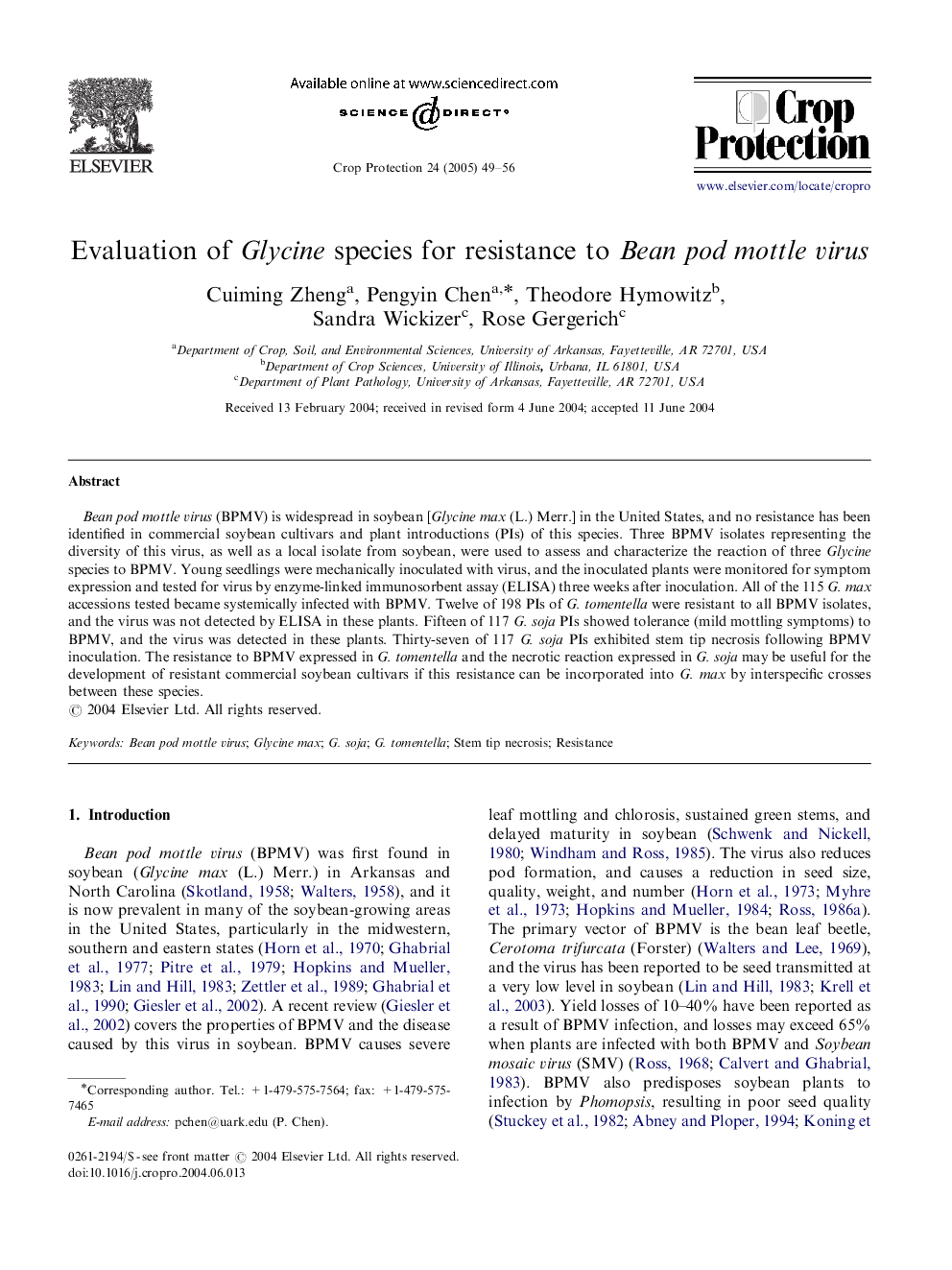| Article ID | Journal | Published Year | Pages | File Type |
|---|---|---|---|---|
| 9472872 | Crop Protection | 2005 | 8 Pages |
Abstract
Bean pod mottle virus (BPMV) is widespread in soybean [Glycine max (L.) Merr.] in the United States, and no resistance has been identified in commercial soybean cultivars and plant introductions (PIs) of this species. Three BPMV isolates representing the diversity of this virus, as well as a local isolate from soybean, were used to assess and characterize the reaction of three Glycine species to BPMV. Young seedlings were mechanically inoculated with virus, and the inoculated plants were monitored for symptom expression and tested for virus by enzyme-linked immunosorbent assay (ELISA) three weeks after inoculation. All of the 115 G. max accessions tested became systemically infected with BPMV. Twelve of 198 PIs of G. tomentella were resistant to all BPMV isolates, and the virus was not detected by ELISA in these plants. Fifteen of 117 G. soja PIs showed tolerance (mild mottling symptoms) to BPMV, and the virus was detected in these plants. Thirty-seven of 117 G. soja PIs exhibited stem tip necrosis following BPMV inoculation. The resistance to BPMV expressed in G. tomentella and the necrotic reaction expressed in G. soja may be useful for the development of resistant commercial soybean cultivars if this resistance can be incorporated into G. max by interspecific crosses between these species.
Related Topics
Life Sciences
Agricultural and Biological Sciences
Agronomy and Crop Science
Authors
Cuiming Zheng, Pengyin Chen, Theodore Hymowitz, Sandra Wickizer, Rose Gergerich,
